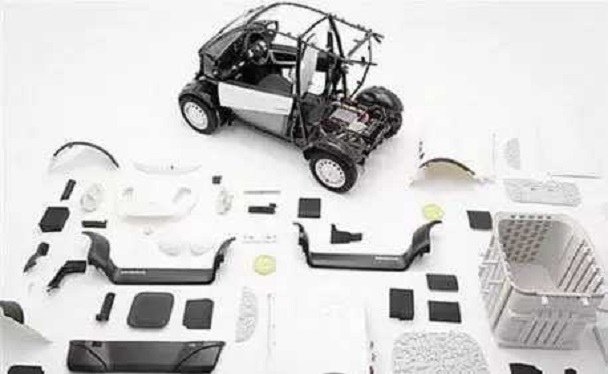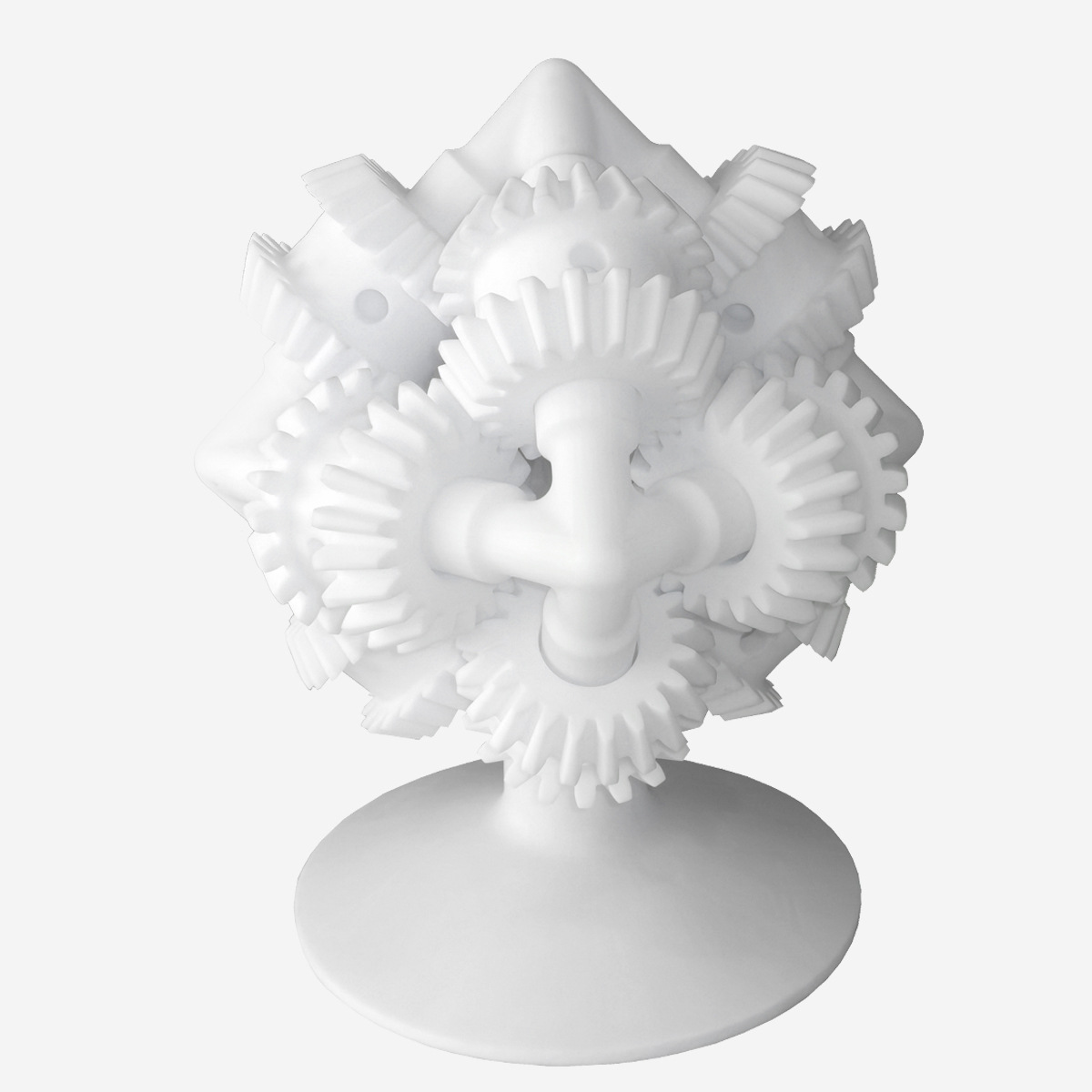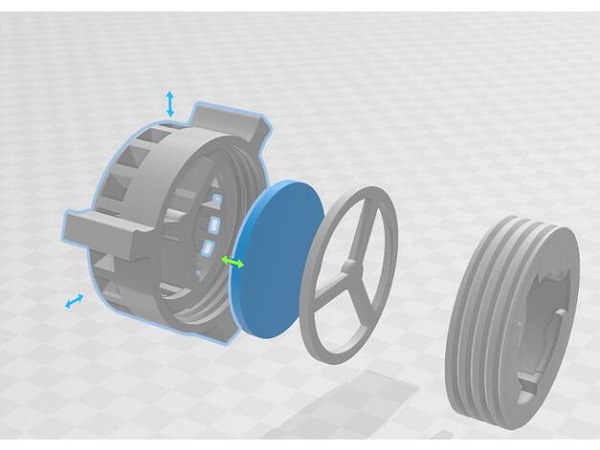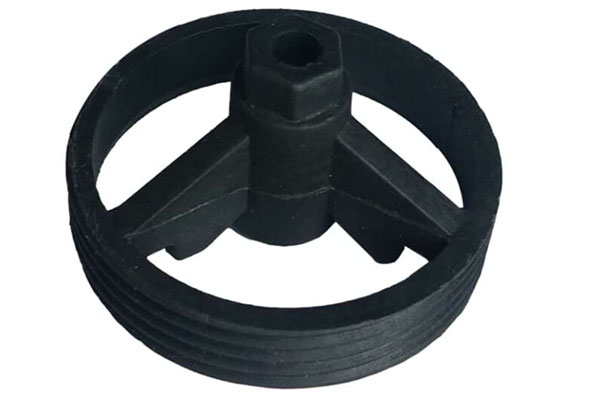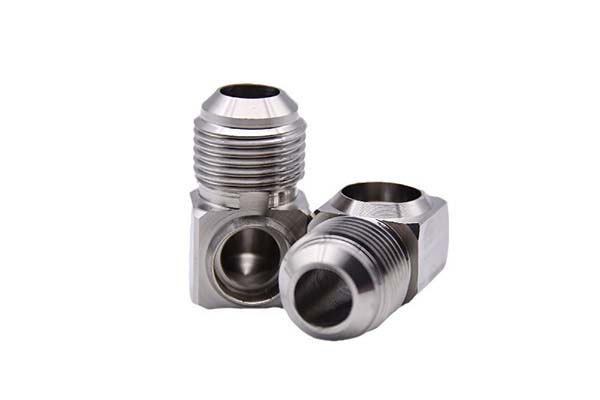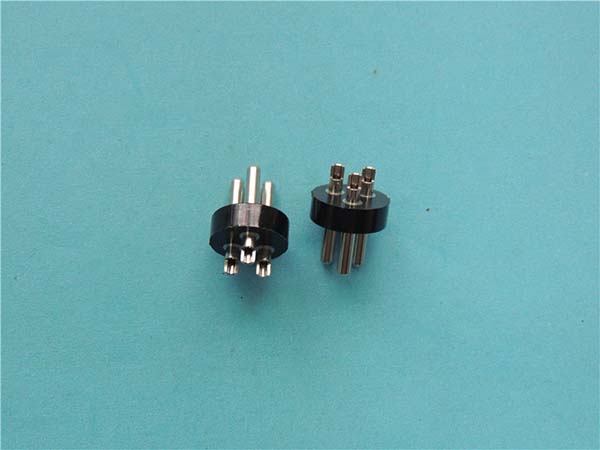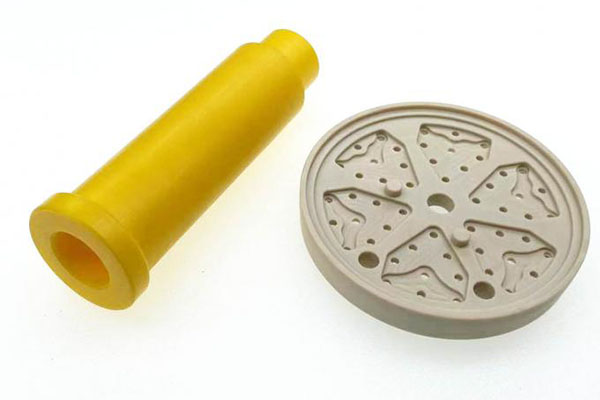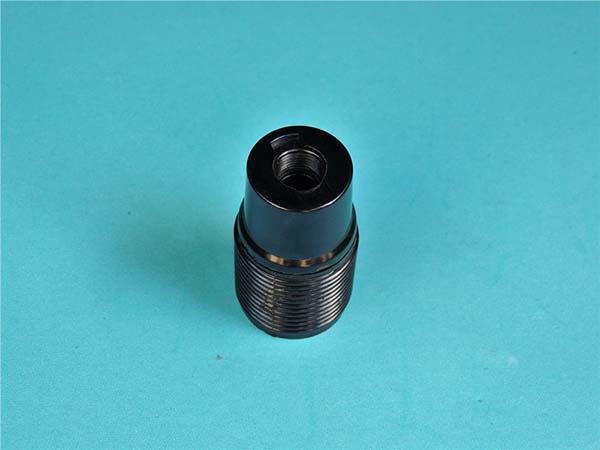yigu: In the world of manufacturing, ceramic additive manufacturing has emerged as a revolutionary technology. However, like any emerging field, it comes with its own set of challenges. How can manufacturers choose the right ceramic materials for their specific applications? Which printing process is most suitable for achieving the desired results? What equipment is necessary, and how can post - processing be optimized? This article aims to address these pain points and provide a comprehensive guide to ceramic additive manufacturing.
1. Materials for Ceramic Additive Manufacturing
Types of Ceramic Powders
Ceramic powders are the building blocks of ceramic additive manufacturing. Alumina is a widely used ceramic powder known for its high hardness, excellent wear resistance, and good electrical insulation properties. It is commonly used in applications such as cutting tools, electrical insulators, and biomedical implants. Zirconia is another popular choice. It offers high toughness, making it suitable for applications where impact resistance is crucial, such as in dental restorations and some aerospace components. Silicon carbide has outstanding thermal conductivity, high strength, and excellent chemical stability. It is often used in high - temperature applications, like in the aerospace industry for parts that need to withstand extreme heat. Boron nitride is valued for its low friction coefficient, high thermal conductivity, and electrical insulation properties. It is used in applications where lubrication and heat dissipation are important, such as in some electronic devices.
Composite Ceramics and Material Formulations
Composite ceramics combine different materials to achieve enhanced properties. For example, carbon - fiber - reinforced ceramic composites offer high strength and low weight, making them suitable for aerospace applications. Material formulations play a crucial role in determining the final properties of the ceramic parts. The right combination of ceramic powders, binders, and additives can improve printability, mechanical properties, and surface finish. Additives for ceramics, such as dispersants, can help in achieving a more uniform distribution of ceramic particles in the printing material, leading to better - quality prints.
Green Bodies and Sintered Ceramics
The process of ceramic additive manufacturing typically involves creating a green body first. The green body is the initial printed structure, which is often fragile and contains a significant amount of binder. After printing, the green body undergoes sintering to transform it into a dense, strong sintered ceramic. Sintering is a crucial step as it densifies the ceramic, improves its mechanical properties, and reduces porosity. However, it also requires careful control of temperature and time to avoid issues such as warping, cracking, or uneven shrinkage.
2. Printing Processes in Ceramic Additive Manufacturing
Binder Jetting and Inkjet Printing
Binder jetting is a popular printing process in ceramic additive manufacturing. In this process, a binder is selectively deposited onto a bed of ceramic powder to bind the particles together layer by layer. It allows for relatively fast printing speeds and can handle a wide range of ceramic materials. Inkjet printing is similar, but instead of a binder, ceramic - loaded inks are jetted onto the build surface. This process offers high precision and can be used to create complex geometries with fine details.
Stereolithography and Digital Light Processing (DLP)
Stereolithography and Digital Light Processing (DLP) are based on the principle of curing a photosensitive resin - ceramic slurry using light. In stereolithography, a laser is used to selectively cure the resin - ceramic mixture layer by layer. DLP, on the other hand, uses a digital light projector to cure the entire layer at once, which can result in faster printing times. These processes are known for their high resolution and ability to create smooth surface finishes, making them suitable for applications where precision and aesthetics are important, such as in dental restorations and some jewelry designs.
Fused Deposition Modeling (FDM) and Selective Laser Sintering (SLS)
Fused Deposition Modeling (FDM) in ceramic additive manufacturing involves extruding a ceramic - filled filament through a nozzle to build the part layer by layer. It is a relatively simple and cost - effective process, but it may have limitations in terms of precision and the types of ceramics that can be used. Selective Laser Sintering (SLS) uses a laser to sinter ceramic powders directly. This process can produce parts with high density and good mechanical properties, but it requires careful control of the laser parameters and the powder bed temperature.
Extrusion - Based Printing and Process Parameters
Extrusion - based printing, which includes FDM, has several process parameters that need to be optimized. These include the extrusion temperature, printing speed, layer thickness, and nozzle diameter. For example, a higher extrusion temperature can improve the flow of the ceramic - filled filament but may also lead to degradation of the material if it is too high. The layer thickness affects the resolution and surface finish of the print; thinner layers result in a smoother surface but longer printing times. In - process monitoring is also crucial in all printing processes. Sensors can be used to monitor parameters such as temperature, pressure, and layer thickness during the printing process. This allows for real - time adjustments to be made, reducing the risk of defects and improving the overall quality of the printed part.
3. Equipment and Systems for Ceramic Additive Manufacturing
Ceramic 3D Printers
There are various types of ceramic 3D printers available on the market, each designed to work with specific printing processes. Desktop ceramic 3D printers are often used for small - scale prototyping and research purposes. They are relatively affordable and easy to use. Industrial - grade ceramic 3D printers, on the other hand, are designed for high - volume production and can handle larger part sizes and more complex geometries. These printers are typically more expensive but offer higher precision and better performance.
Printing Nozzles, Laser Systems, and UV Light Sources
Printing nozzles play a critical role in extrusion - based printing processes. The design and size of the nozzle affect the flow rate of the ceramic material and the quality of the printed lines. In processes that use lasers, such as SLS, the laser system needs to be carefully calibrated to ensure accurate sintering of the ceramic powders. The power, wavelength, and focus of the laser are important parameters that can impact the density and mechanical properties of the final part. In stereolithography and DLP, UV light sources are used to cure the photosensitive resin - ceramic slurry. The intensity and wavelength of the UV light need to be optimized for the specific resin - ceramic formulation being used.
Powder Bed Systems and Material Delivery Systems
Powder bed systems are essential for processes like binder jetting and SLS. These systems need to ensure a uniform distribution of ceramic powder across the build area. Material delivery systems, such as those used in extrusion - based printing, need to accurately feed the ceramic - filled filament or paste into the printer. Proper calibration of these systems is crucial for consistent and high - quality prints. Post - processing equipment is also an important part of ceramic additive manufacturing. This includes furnaces for sintering, machining tools for achieving tight tolerances, and polishing equipment for improving the surface finish. Calibration tools are used to ensure that all the equipment in the ceramic additive manufacturing process is operating correctly. Safety systems, such as emergency stop buttons, ventilation systems to remove fumes, and protective enclosures for lasers, are also necessary to protect operators. Regular equipment maintenance, including cleaning, replacing worn - out parts, and software updates, is essential to keep the equipment in good working condition and to ensure consistent print quality.
4. Applications of Ceramic Additive Manufacturing
Aerospace Components
In the aerospace industry, ceramic additive manufacturing is used to produce components that need to withstand extreme conditions. For example, ceramic matrix composites made through additive manufacturing are used in engine components due to their high strength, low weight, and excellent heat resistance. These components can help reduce fuel consumption and improve the overall performance of aircraft.
Medical Implants and Dental Restorations
Ceramic materials are biocompatible, making them ideal for medical implants and dental restorations. Additive manufacturing allows for the creation of customized implants that are tailored to the specific needs of patients. In dentistry, ceramic 3D printing can be used to create crowns, bridges, and dental implants with high precision and aesthetic appeal.
Electronics, Automotive Parts, and Industrial Tooling
In the electronics industry, ceramic components are used for their electrical insulation and thermal management properties. Additive manufacturing enables the production of complex - shaped ceramic parts for electronic devices, such as heat sinks and insulators. In the automotive industry, ceramic parts can be used in engines and braking systems to improve performance and durability. Industrial tooling can also benefit from ceramic additive manufacturing, as ceramic tools are often more wear - resistant than their metal counterparts.
Energy Components, Customized Products, and Architectural Elements
For energy components, such as those used in fuel cells and solar panels, ceramic additive manufacturing can create components with optimized structures for better energy conversion and storage. Customized products can be easily produced through ceramic additive manufacturing, allowing for unique designs and features. In architecture, ceramic architectural elements can be 3D - printed to add aesthetic value and functionality to buildings. Ceramic additive manufacturing is also finding its way into art and design projects, enabling artists to create unique, complex ceramic sculptures and installations.
5. Post - Processing in Ceramic Additive Manufacturing
Sintering, Firing, and Heat Treatment
Sintering is a key post - processing step in ceramic additive manufacturing. It is the process of heating the green body to a high temperature to densify the ceramic material. Firing is a similar term often used interchangeably with sintering. Heat treatment can also be used to further improve the mechanical properties of the ceramic part. For example, annealing can relieve internal stresses, making the part more ductile.
Machining, Polishing, and Surface Finishing
Machining may be required to achieve tight tolerances or to create specific features that cannot be easily printed. Polishing is used to improve the surface finish of the ceramic part, making it smoother and more aesthetically pleasing. Surface finishing techniques, such as chemical etching or coating, can be applied to enhance the surface properties of the ceramic, such as corrosion resistance or wear resistance.
Support Removal and Infiltration
Support structures are often used during the printing process to hold up overhanging parts. After printing, support removal is necessary. This can be done through manual methods, using solvents, or through mechanical means, depending on the material and the complexity of the support structure. Infiltration involves filling the pores of the sintered ceramic with a secondary material to improve its density and mechanical properties.
Post - Processing Optimization and Quality Control
Post - processing optimization aims to find the most efficient and cost - effective way to perform post - processing operations. This may involve optimizing the sequence of operations, choosing the right combination of techniques, or using automated post - processing equipment. Quality control in post - processing is crucial to ensure that the final ceramic part meets the required specifications. This can include inspections for surface defects, dimensional accuracy, and mechanical property testing.
Yigu Technology's Perspective
As a custom plastic and metal parts manufacturer, Yigu Technology recognizes the potential of ceramic additive manufacturing. We understand the importance of selecting the right materials and processes to meet the specific requirements of each project. Our experience in manufacturing can be extended to ceramic additive manufacturing, where we can help clients optimize their designs, choose suitable equipment, and ensure high - quality post - processing. By leveraging our expertise in material science and process engineering, we can contribute to the successful implementation of ceramic additive manufacturing projects.
FAQ
- What are the best ceramic materials for high - temperature applications in ceramic additive manufacturing?
Materials like silicon carbide and zirconia are excellent for high - temperature applications. Silicon carbide has high thermal conductivity and can withstand extreme heat, while zirconia offers good mechanical properties even at elevated temperatures.
- How can I reduce the porosity in 3D - printed ceramic parts during sintering?
Proper control of sintering temperature, time, and atmosphere is crucial. Using a higher sintering temperature within the appropriate range for the specific ceramic material can help reduce porosity. Also, optimizing the material formulation, such as using the right amount of binder and additives, can contribute to lower porosity.
- Which printing process is most suitable for creating highly detailed ceramic jewelry?
Stereolithography and Digital Light Processing (DLP) are highly suitable for creating detailed ceramic jewelry. These processes offer high resolution and can produce smooth surface finishes, allowing for the creation of intricate designs with fine details.
